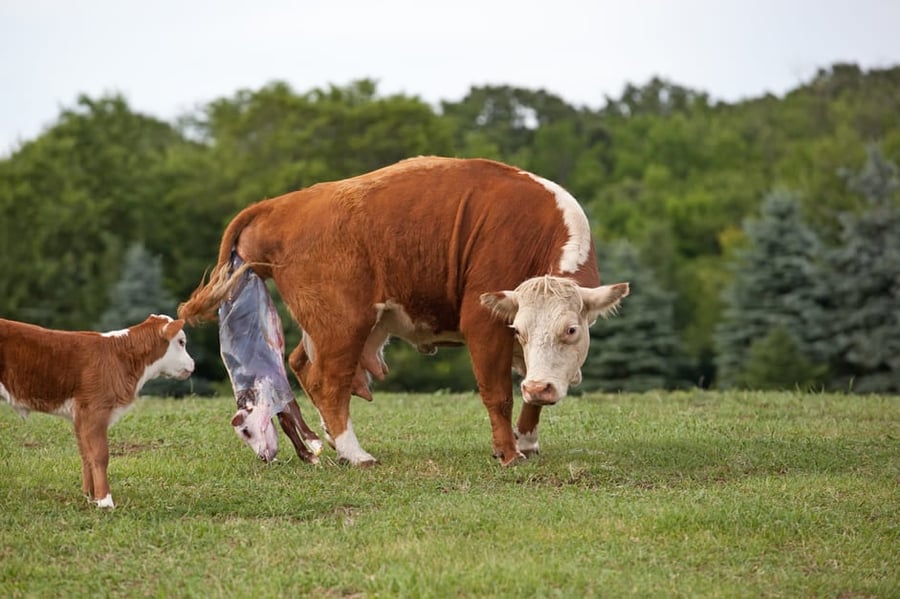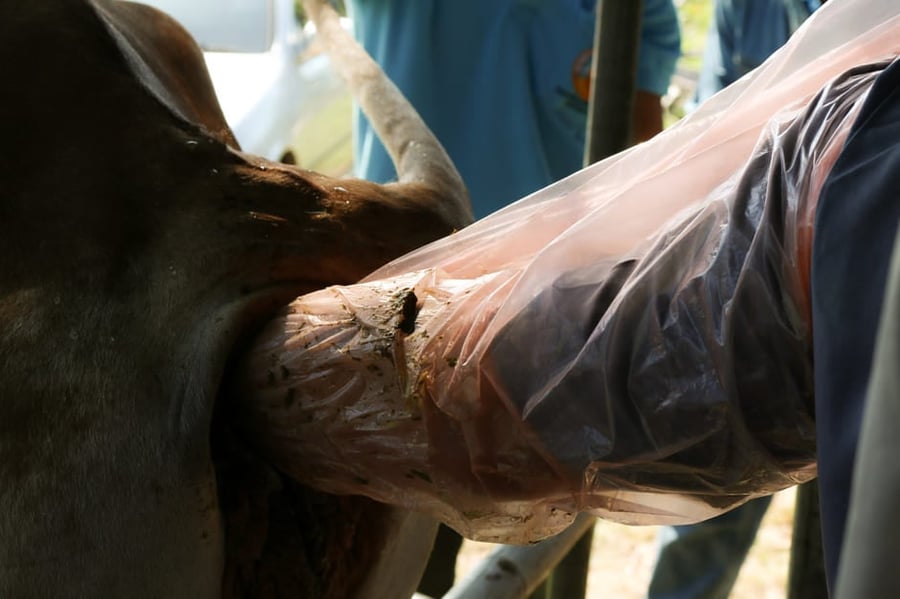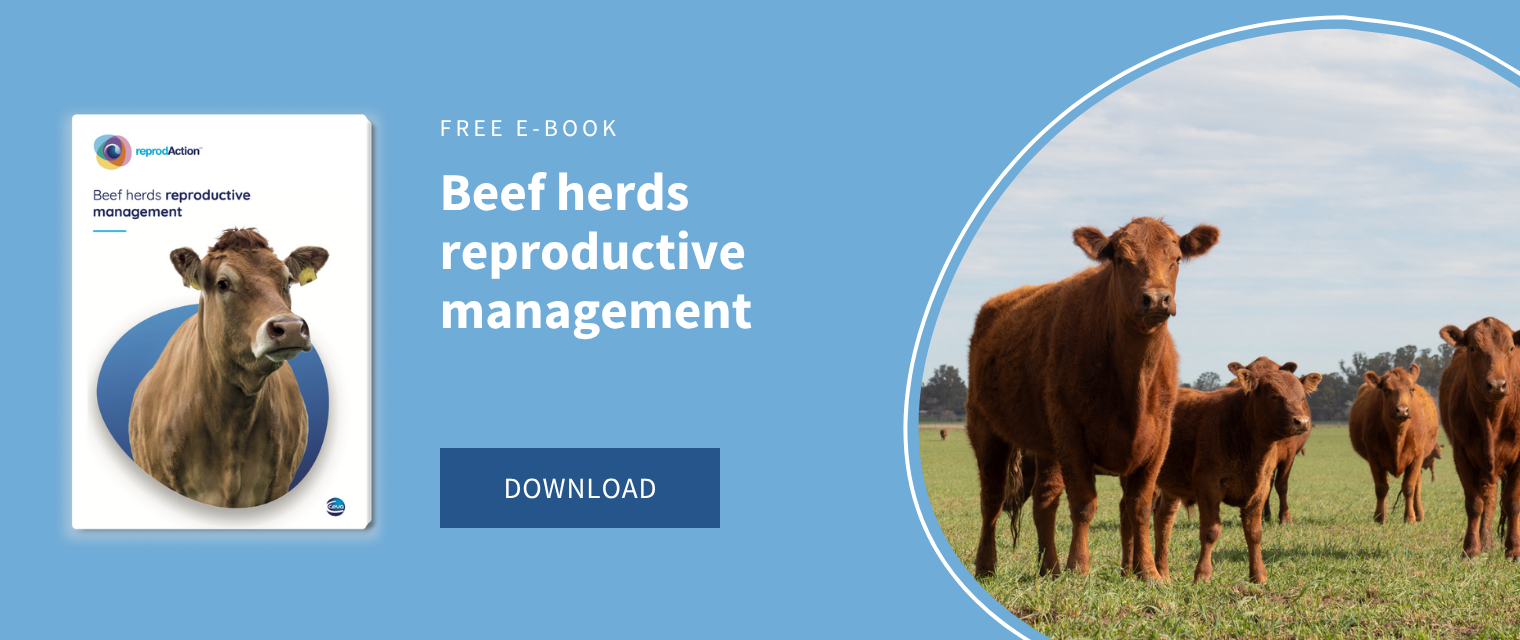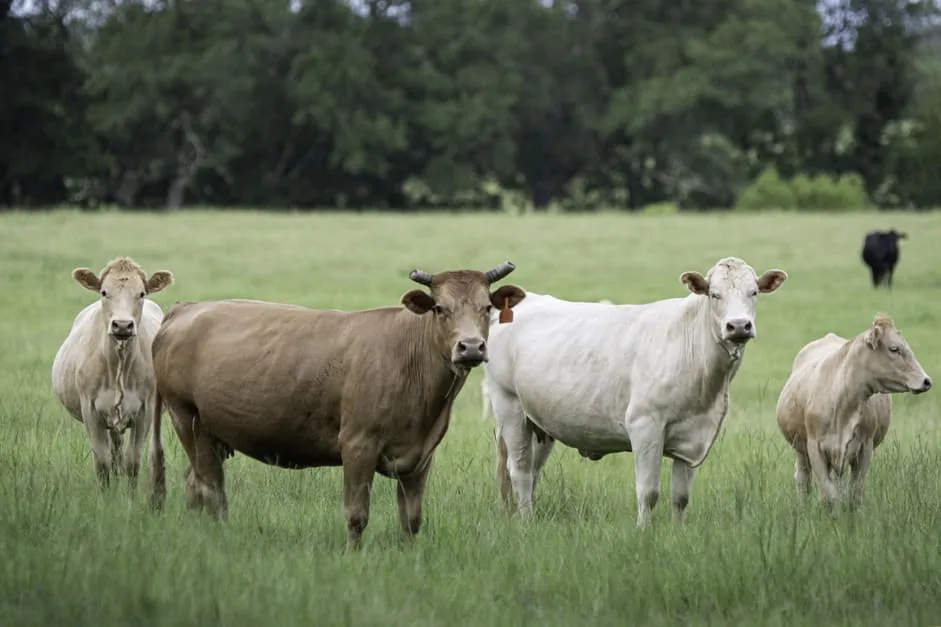Being able to precisely define the length of the cow gestation period is essential for dairy farmers, as it allows them to adjust the dry period and adapt the management of cows and heifers in late gestation. In this way, the health of cows in the postpartum period can be increased, reducing the risk of metabolic and reproductive diseases. Consequently, it will have a positive impact on milk production and reproductive performance.
Negative effects of abnormal duration of the cow gestation period
According to the literature, abnormal gestation length is related to the occurrence of different metabolic and reproductive pathologies such as ketosis, dystocia, or metritis. These pathologies result in increased deaths in the first 90 days in milk (DIM), increased culling rates at 300 DIM, decreased milk production and fertility, as well as increased post-weaning mortality of the calves1.
Therefore, a detailed understanding of the factors influencing gestation length is important, as it will allow a reliable estimation of the expected calving day.

Factors affecting duration of the cow gestation period
These factors have been investigated by several studies in different parts of the world, and it was concluded that the length of gestation depends on several factors2, 3:
- Foetal sex: gestations of male foetuses are longer than gestations of a female foetuses.
- Number of foetuses: this is probably the most influent factor on gestation length. Twin pregnancies are shorter than single pregnancies. It is known that the mechanisms that trigger calving are associated to foetal stress. This foetal stress is higher when there are two foetuses, due to reduced space and insufficient nutrient supply.
- Age/parity: Heifers have shorter pregnancies than cows. As during their first pregnancy heifers haven’t concluded their growth, the abdominal cavity does not provide enough space for the foetus at the end of the gestation, causing stress to the calf and, consequently, an early onset of calving. Additionally, in lactating dairy cows, the fast metabolization of progesterone in multiparous cows delay foetal growth and prolong gestation length.
- Milk production: High-producing cows have longer gestations. The explanation for this would be the same as for the effect of parity. The higher the production, the higher the hepatic metabolism and the faster the progesterone is metabolized.
- Conception month: Cows and heifers that become pregnant in the first half of the year tend to have longer gestations. Although the cow is not seasonal, photoperiod still has some influence on the reproduction of these animals, and it is believed that the decrease in photoperiod in the autumn influences the length of gestation.
- Days in milk: Gestation length decreases as DIM increase. It may also be related to progesterone levels, since as DIM increase, production and hepatic metabolism decrease.
- Temperature: When temperature/humidity index (THI) during the last days of gestation is high, calving may occur sooner as a result of stress.
- Sire: Several studies have indicated that the sire has an influence on gestation length. Particular care must be paid when using natural service as gestation length and foetal sizes are unpredictable in the first year of breeding of the used bulls. Recent studies demonstrate that paternal effects on gestation length may occur through the regulation of embryonic development4.

Future perspectives
Cow gestation period length has a relevant hereditary component. Different studies agreed that the heritability of this parameter is moderate, ranging between 0.33 and 0.625. This has led to consider the selection of animals based on an ideal gestation length. However, the problem now is to decide which is the ideal gestation length. From a reproductive performance point of view, reducing gestation length would reduce the calving interval; nevertheless, the possible negative effect of this reduction and its small impact on reproductive efficiency do not justify this selection, since, as some authors conclude, reducing days open would have a much greater impact on the calving interval6.
Another implication is the possibility of predicting, with some accuracy, the duration of gestation in an animal by genomic investigation. However, this option is still under investigation and, although there are promising results4, it is not yet available on a large scale.
Conclusions
- Gestation length is affected by numerous factors, including genetic and environmental factors.
- By understanding both groups of factors, we can accurately predict calving time.
- Being able to predict gestation length allows us to adapt the management of animals in the late gestation period and increase the health of transition cows.

References
1. Vieira-Neto, A., Galvão, K. N., Thatcher, W. W., & Santos, J. E. P. (2017). Association among gestation length and health, production, and reproduction in Holstein cows and implications for their offspring. Journal of Dairy Science, 100(4), 3166-3181.
2. Tomasek, R., Rezac, P., & Havlicek, Z. (2017). Environmental and animal factors associated with gestation length in Holstein cows and heifers in two herds in the Czech Republic. Theriogenology, 87, 100-107.
3. Norman, H. D., Wright, J. R., Kuhn, M. T., Hubbard, S. M., Cole, J. B., & VanRaden, P. M. (2009). Genetic and environmental factors that affect gestation length in dairy cattle. Journal of dairy science, 92(5), 2259-2269.
4. Fang, L., Jiang, J., Li, B., Zhou, Y., Freebern, E., Vanraden, P. M., ... & Ma, L. (2019). Genetic and epigenetic architecture of paternal origin contribute to gestation length in cattle. Communications biology, 2(1), 1-11.
5. Purfield, D. C., Evans, R. D., Carthy, T. R., & Berry, D. P. (2019). Genomic regions associated with gestation length detected using whole-genome sequence data differ between dairy and beef cattle. Frontiers in genetics, 10, 1068.
6. Hansen, M., Lund, M. S., Pedersen, J., & Christensen, L. G. (2004). Gestation length in Danish Holsteins has weak genetic associations with stillbirth, calving difficulty, and calf size. Livestock Production Science, 91(1-2), 23-33.
About the author
Federico Randi (Ruminants Global Technical Manager)
Federico Randi is Global Technical Manager for Ruminants at Ceva Animal Health, specializing in cattle reproduction. With a Doctor of Veterinary Medicine degree “cum laude” from the University of Bologna, he focused his career on improving efficiency and sustainability of farmed animals. Randi conducts research on ruminants fertility, using technologies like Timed AI, embryo transfer, and recombinant technologies. His extensive experience includes collaborative projects with over 20 research institutions globally. He earned his PhD at University College Dublin, concentrating on fixed-time artificial insemination and embryonic maternal communication in cattle. Currently, he serves as a Board Member in the Scientific Commission of Animal Physiology for the European Federation of Animal Science (EAAP) as an Industry Representative.
About the author
Dr. Luis A. Quintela (Senior Lecturer in Animal Reproduction)
Professor in the Department of Animal Pathology at the Veterinary Faculty in Lugo, Unvidersidade de Santiago de Compostela (USC). Graduate with a DVM in 1989 and PhD in Veterinary Science in 1996 at the USC. Teaching reproduction and obstetrics, veterinary clinical ultrasound and dairy cattle medicine for graduate and MA students. Adviser in reproduction for a pharmaceutical company since 2007. In the field of investigation, he has participated in and directed several research projects and collaborated with I+D+I programs of several pharmaceutical companies. He has more than one hundred articles of investigation and divulgation and more than one hundred thirty meeting abstracts in national and international congress, he has eight books or book chapters, and he has a patent in exploitation. Most of his works were developed in the field of reproduction in cattle.
About the author
Uxía Yáñez (Predoctoral Fellow)
Assistant Researcher, Universidade de Santiago de Compostela (USC). PhD in Veterinary Medicine and Health by at USC in 2023. Her research activity is focused on ultrasonography and its applications in the reproductive management of dairy cattle, as well as the influence of peripartum diseases on the profitability of the farms. Additionally, her work involves practical teaching sessions about cattle reproduction at the Faculty of Veterinary Medicine in Lugo (Galicia, Spain).



Leave your comments here